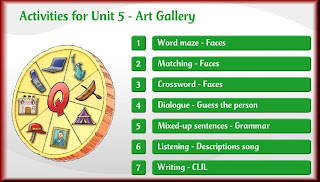I talk a lot about hydration on this blog. I thought it would be a good idea to talk about everything water does for us in our body, besides just cooling us off through sweat. Proper hydration is important to perform best at your sport, but it does so much more! Water helps control our internal body temperature through sweating. Athletes know all about that!
It is the water in our blood that carries nutrients (glucose, oxygen, and fats) to the muscles and also removes the by-products from metabolism. The waste products are rid from our body through urine. Darker urine means that the waste is more concentrated. Being properly hydrated will reduce the stress on the kidneys and liver, whose job it is to remove waste from the body. Water also lubricates our joints and provides cushion to our organs. Drinking enough water will also help prevent constipation.
So as you can see, water has many roles in our body. As an athlete, you are at a greater risk for dehydration due to the amount of sweat you lose. This post serves as another friendly reminder of the importance of drinking enough water throughout the day!
References:
Mayo Clinic
Clark N. Sports Nutrition Guidebook. 4th ed. Champaign, IL; Human Kinetics; 2008.
Tuesday, 27 November 2012
Sunday, 25 November 2012
DESCRIPTIONS
VOCABULARY
-Watch the video and learn the adjectives
-Another video about physical appearance

-Descriptions vocabulary (click and listen)
GAMES
-Who is she?

Listen and click

Listen and click 2

-Vocabulary activities to practice describing people
If you want to do more activities the games below are very helpful.:

Listen and click


-Vocabulary activities to practice describing people
If you want to do more activities the games below are very helpful.:
Monday, 19 November 2012
Happy Thanksgiving! Nine nutrition myths busted!
Happy Thanksgiving, Summit League Athletes! Here is a little information for you to read as you prepare to head home for Thanksgiving break. We have all heard that turkey makes us tired, but is that really true? What health benefits do cranberries provide?
9 Thanksgiving Nutrition Myths, Busted
Tuesday, 13 November 2012
Recipe: Homemade Granola Bars
Granola bars are a great snack to take on the go. They also pack a lot of nutrients and are a healthy alternative to sugary, high fat snack options. The best part about making them homemade is that you can switch up the ingredients to meet your preferences.
Yield 24 servings.
Serving size: 1 bar.
Ingredients:
1. Preheat oven to 350 degrees. 2. Peel and grate the carrots
3. Put the honey and peanut butter in a large saucepan. Cook on low heat until they melt
4. Remove the pan from the heat. Turn off the burner
5. Add oatmeal, raisins, carrots, and coconut to the saucepan. Stir well, and let it cool until you can safely touch it with your hands.
6. Spray a baking pan, approximately 9x9x2 depending on how thick you want them, with cooking oil.
7. Put the mix in the baking pan.
8. Press the mix firmly into the bottom of the pan.
9. Bake for 25 minutes.
10. Cut into 24 bars.
11. Use plastic baggies or plastic wrap to individually store them.
Alternatives: Add almonds or peanuts for more protein. Add ground flax seed for additional fiber.
Serving size: 1 bar.
Ingredients:
- 1 cup honey
- 1 cup natural peanut butter, smooth or crunchy
- 3 ½ cups rolled oats
- ½ cup raisins
- ½ cup carrot, grated
- ½ cup coconut
1. Preheat oven to 350 degrees. 2. Peel and grate the carrots
3. Put the honey and peanut butter in a large saucepan. Cook on low heat until they melt
4. Remove the pan from the heat. Turn off the burner
5. Add oatmeal, raisins, carrots, and coconut to the saucepan. Stir well, and let it cool until you can safely touch it with your hands.
6. Spray a baking pan, approximately 9x9x2 depending on how thick you want them, with cooking oil.
7. Put the mix in the baking pan.
8. Press the mix firmly into the bottom of the pan.
9. Bake for 25 minutes.
10. Cut into 24 bars.
11. Use plastic baggies or plastic wrap to individually store them.
Alternatives: Add almonds or peanuts for more protein. Add ground flax seed for additional fiber.
Recipe adapted from the USDA SNAP-ed website: http://recipefinder.nal.usda.gov/recipes/granola-bars
Guest Blogger: Emily Seidl, USD Dietetic Intern
Thursday, 8 November 2012
SCHOOL

Nesta parte tedes vocabulario, xogos , cancións... todo relacionado coa escola.
VOCABULARY
Watch and learn the vocabulary :
Watch the video to learn the classroom language :
Watch and learn the vocabulary :
Watch the video to learn the classroom language :

Read the stories first:
SONGS
STORIES
DIALOGUES
SCHOOLS AROUND THE WORLD
IN ENGLAND

-Woodland Junior School : read what students say about the school
-This is "Willowbrook Primary School in England":
IN USA:
-watch the video of "Cecile Trost Elementary School" in Oregon (USA) :
Subscribe to:
Comments (Atom)














































